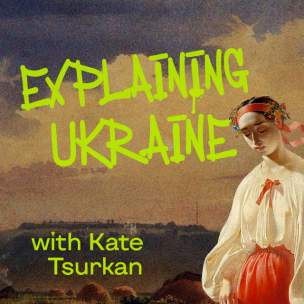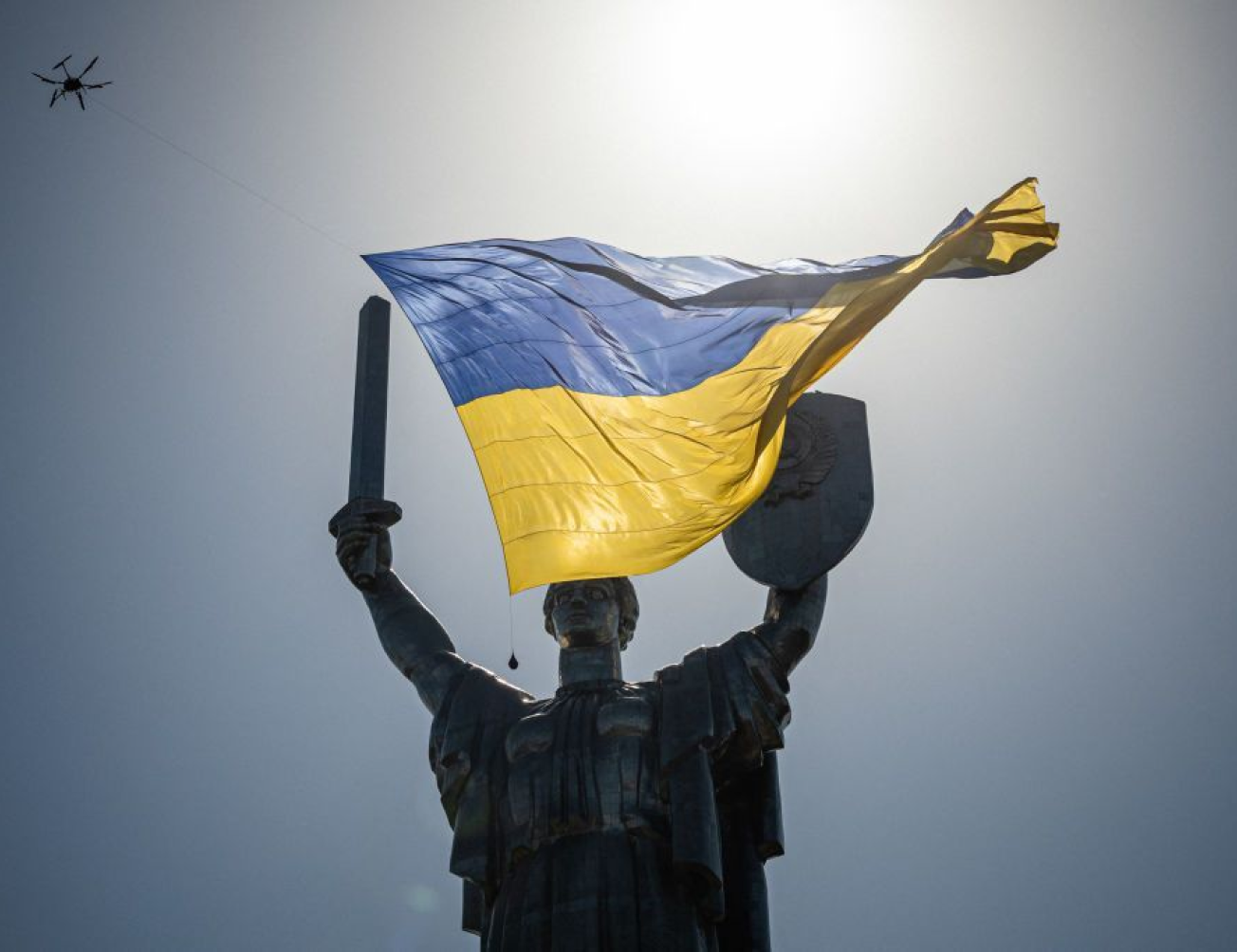
Chornobyl #ExplainingUkraine
The Chornobyl nuclear accident occurred on April 26, 1986, at around 1 a.m. when one of the plant’s nuclear reactors exploded during a planned test. The explosion forever marred the surrounding environment and contaminated a 150,000-square-kilometer swath of land in the nexus between Ukraine, Belarus, and Russia.
The Chornobyl Nuclear Power Plant is located around 130 kilometers north of Kyiv near the Ukrainian town of Prypiat. At the time of the accident, Ukraine was a part of the Soviet Union.
The accident is the most devastating nuclear disaster in the history of nuclear energy production in terms of civilian casualties to date.

The direct aftermath of the catastrophe placed significant strain on the Soviet government, in addition to spewing radioactive substances into the atmosphere over much of the country and even parts of Western Europe.
Mikhail Gorbachev, at the time the General Secretary of the Communist Party of the Soviet Union, waited a full 18 days before releasing a televised statement on the disaster. The government actually celebrated May Day with a parade in Kyiv just a few days after the accident occurred.
In those 18 days, tens of thousands of people were knowingly and unknowingly exposed to iodine-131, a radioactive substance that is known to have directly caused thyroid cancer in those exposed in as little as four years after exposure.
The World Health Organization found that most cases of thyroid cancer resulted from the direct ingestion of contaminated food sources in the days immediately following the disaster. A quicker mobilization from the government could have warned residents of the contamination before radioactive substances were consumed.
Some scholars – such as Marc Elie, who has written extensively on Soviet responses to the disaster in the 1980s and 1990s – suggest that the Soviet Union’s poor response to massive disasters such as Chornobyl may have contributed to its eventual collapse.
What caused the accident?
Reactor Four of the Chornobyl plant exploded on April 26, 1986, during a planned test. According to the International Atomic Energy Agency (IAEA), the explosion happened as a result of “improper testing at low power,” which ignored standard safety measures. Soviet engineers wanted to test how long the turbines of the reactor could operate if the main electrical power supply was suspended.
During the test, operators dramatically reduced power to the reactor, blocking steam to its generators and disabling its automatic shutdown mechanisms. A power surge followed shortly after, causing an intense steam build-up that caused an explosion. The first blast was followed closely by a second.

The explosions and resulting fire destroyed the reactor building and immediately pumped large quantities of radioactive materials into the atmosphere.
The core burned for days. In the meantime, emergency helicopter crews poured sand and boron on the debris in an attempt to suffocate the flames of the smoldering core and stop the release of radioactive material.
These interventions are now known to have suffocated the core, increasing its internal temperature and causing radioactive substances to rise more quickly, contributing to the radioactive cloud that spanned over parts of Western Europe and the Northern Hemisphere.
Who was affected by the Chornobyl explosion?
The initial explosion resulted in the immediate death of two workers. Twenty-eight emergency workers, including firefighters and emergency clean-up staff, died within six months. The WHO estimates that approximately 4,000 people have died since the disaster due to acute radiation symptoms, thyroid cancer, or radiation-induced leukemia.
Prypiat, a town in northern Ukraine only three kilometers from the plant, was evacuated within 36 hours of the disaster. According to the IAEA, around 200,000 people were relocated from their homes due to the disaster. According to other estimates, that number may be as high as 350,000.

Around 600,000 soldiers, firemen, cleanup workers, and residents continued to be exposed to radiation from the explosion in the following years. Some of these individuals were employed to clean up the area and to construct the “Sarcophagus,” a structure built around the demolished reactor meant to contain the radioactive substances within it.
Thousands of people were also deployed to the Chornobyl Exclusion Zone, which encompasses a 30-kilometer radius surrounding the plant. These emergency workers were primarily Ukrainian firefighters, previous plant employees, and soldiers and miners from across the Soviet Union.
Radioactive isotopes were blown as far as northern Europe, but no studies have found any direct negative health links from the radiation from Chornobyl outside of Ukraine, Belarus, and Russia. Currently, over 55,400 square kilometers, or 9% of Ukraine’s territory, is contaminated because of the accident.
What were the long-term health consequences of Chornobyl?
The IAEA established the Chornobyl Forum in 2003 to evaluate the health and environmental consequences of the disaster. The Forum consists of eight UN organizations, as well as the governments of Ukraine, Belarus, and Russia.
In 2006, the Forum released a health report led by the WHO. The report concluded that apart from the increase in thyroid cancers in children after direct exposure to radiation, “there is no evidence of a major public health impact attributable to radiation exposure 14 years after the accident” and that “the great majority of the population is not likely to experience serious health consequences as a result of radiation from the Chornobyl accident.”
The report also mentions that many people living in the affected areas suffer a “paralyzing fatalism” associated with the myth of radiation exposure. Mental health is therefore referred to as “the largest public health problem created by the accident” by the Chornobyl Forum, which is partially attributed to the trauma of relocation faced by thousands of people.

The Forum attributes most physical health problems of the residents of the contaminated area to be a result of other external factors, including poor nutrition, smoking, and alcohol abuse.
The report also claims that “there was no evidence of any effect on the number of stillbirths, adverse pregnancy outcomes, delivery complications or overall health of (newborn) children,” or any other confirmed inherited side effects.
Nevertheless, many women in the affected area and throughout Europe underwent abortions for fear of complications due to radiation, and the birthrate in contaminated areas plummeted following the disaster.
Is Chornobyl safe today?
Most of the exclusion zone remains abandoned, but the area is generally considered safe to visit for short periods of time. The Chornobyl Forum stated in its 2006 report that “the majority of the ‘contaminated’ territories are now safe for settlement and economic activity.”
More recently, in April 2022, IAEA Director General Rafael Mariano Grossi said that radiation levels in Chornobyl were within the safe limits of radiation exposure following the Russian military’s occupation of the power plant in March 2022 during the invasion of Ukraine.

A recent investigation from Greenpeace International, however, claimed that the IAEA data was downplaying the severity of the radiation in the area. The organization found that radiation levels were three times higher than those measured by the IAEA in zones where Russian military operations occurred.
Why is Chornobyl relevant today?
Within days of the start of Russia’s full-scale invasion in February 2022, Russian forces occupied the Chornobyl Nuclear Power Plant. Ukrainian plant workers reported losses of electricity, which is critical to maintaining the stability and safety of the plant, as well as damage to nuclear laboratories.
Russian military operations have also hampered scientific work in the exclusion zone, with landmines now threatening scientists and preventing them from continuing their work.
Russian aggression and military operations around Ukraine’s other nuclear power plants, particularly the Zaporizhzhia Nuclear Power Plant, occupied by Russian forces since March 2022, have caused fears of another mass catastrophe.

Russian forces have used the Zaporizhzhia plant as a base from which to launch attacks and shell Ukrainian-controlled territory across the Dnipro River. While the plant was placed into a cold shutdown in September 2022, it still remains vulnerable. IAEA monitors present at the plant reported hearing shelling almost every day in April 2023.
Russian attacks on energy infrastructure in Ukraine could also “deprive reactors of the electricity they use for cooling, which would not spark an immediate accident but would strip away an important layer of safety protection,” according to a report from the Carnegie Endowment For International Peace.
















